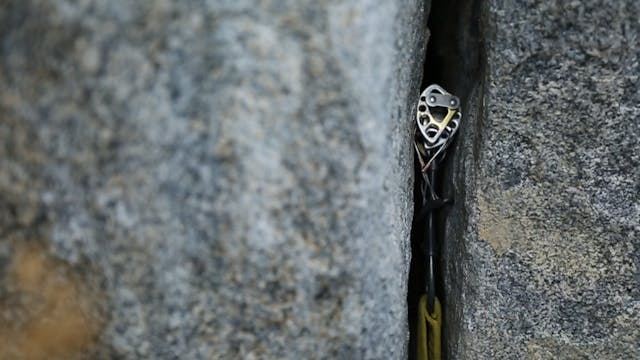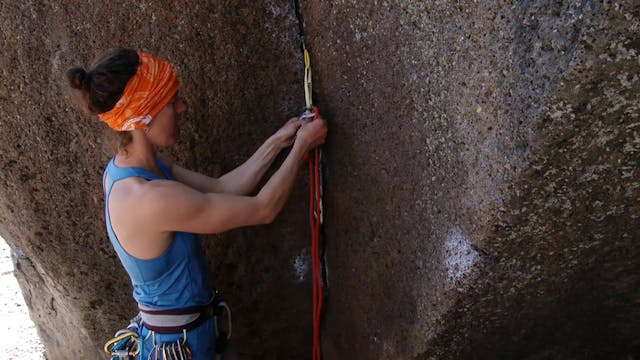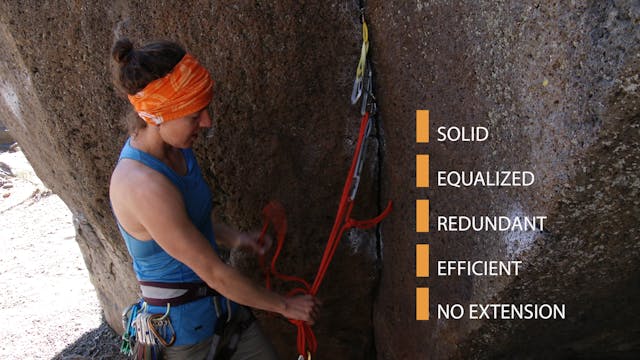Traditional Climbing: 9. Cam Considerations - 4 Lobe vs. 3 Lobe
Traditional Climbing
•
2m 29s
In this video we review considerations between using a 4 lobe (Alien) vs 3 lobe (Metolius TCU) cams. Both can be useful, and have different applications (see below):
4 Lobe:
- Wider than the 3 lobe, so not ideal for shallow cracks.
- More surface area than 3 lobe, can inspire more confidence in less-than-perfect rock
- Higher tendency to walk than 3 lobe.
- Four lobe cams may have 1 or 2 axes. Cams with 2 axes have greater range, but are heavier than single axes cans
3 Lobe:
- Narrower profile than most 4 lobe cams, better for shallow cracks.
- Less surface area than 4 lobe cams, so it’s extra important to be placed in high quality rock.
- Less tendency to walk back in the crack, but may pivot more than cams with 4 lobes due to having one side with a single lobe touching the rock. Manage this risk/issue by extending the cam with a sling.
We hope you found this video helpful. Feel free to comment below with questions or thoughts!
Please remember, climbing is inherently dangerous. Climb at your own risk.
Up Next in Traditional Climbing
-
Traditional Climbing: 10. Retrieving ...
In this video we review considerations for retrieving stuck cams. Cams can get stuck for many reasons. Perhaps it was incorrectly placed, jammed into place when fully cammed, i.e. by a freaked out climber on lead in desperate need of protection. Sometimes the rope movement after the leader climbs...
-
Traditional Climbing: 11. Building Tr...
In this video we review the fundamentals of building a traditional anchor system. You’ll notice we revisit the acronym of S.E.R.E.N.E., however this time we have added an extra “E”, which will be covered in the next video “Building Trad Anchors - S.E.R.E.N.E.”
For now, let’s start from the top...
-
Traditional Climbing: 12. Building Tr...
In this video we continue reviewing the fundamentals of building a traditional anchor system. In our last video, we covered Solid and Equalized, now let’s review the following:
Redundant -
Check each of the pieces in the anchor to determine whether a failure in one point can cause the enti...


